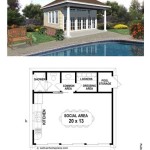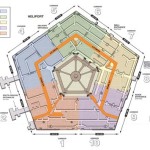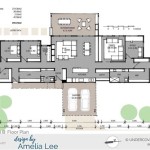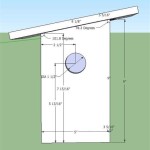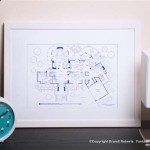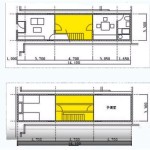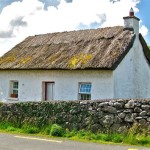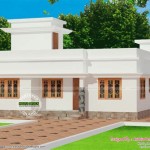Traditional French Country House Plans: A Timeless Aesthetic
French Country house plans evoke a sense of rustic elegance and timeless charm, drawing inspiration from the rural homes of the French countryside. These designs are characterized by their comfortable, inviting atmosphere, and a blend of sophisticated details with natural materials. The enduring popularity of this architectural style lies in its ability to provide a sense of warmth, history, and connection to nature, even in contemporary settings.
The essence of French Country architecture is found in its informal yet refined aesthetic. These homes typically feature symmetrical facades, steeply pitched roofs, and dormer windows that add character and provide natural light to the upper levels. The use of natural materials such as stone, brick, and stucco further enhances the rustic appeal, creating a visual link to the landscape.
Inside, French Country house plans often prioritize open living spaces that encourage gathering and socializing. Kitchens are typically large and well-appointed, serving as the heart of the home. Exposed beams, hardwood floors, and fireplaces contribute to the warm and inviting atmosphere. The overall design emphasizes comfort and functionality, reflecting a lifestyle that values simplicity and connection to family and friends.
Key Features of French Country Architecture
Several defining characteristics distinguish French Country homes from other architectural styles. These features, both exterior and interior, contribute to the overall aesthetic and functionality of the design.
Exterior Elements: The defining features of a French Country home's exterior contribute significantly to its overall charm and character. The combination of these elements creates a welcoming and timeless residence.
Steeply Pitched Roofs: A hallmark of French Country architecture is the steeply pitched roof, often clad in slate, tile, or shingles. This feature not only provides visual interest but also serves a practical purpose, effectively shedding rain and snow. The steep pitch also allows for the incorporation of attic spaces that can be used for storage or living areas.
Dormer Windows: Dormer windows are frequently incorporated into the roof design, adding visual appeal and providing natural light and ventilation to the upper floors. These windows can take various forms, including gabled, shed, or eyebrow dormers, each contributing a unique character to the overall design. Dormers help break up the monotony of the roofline and create a more visually dynamic exterior.
Symmetrical Facades: Many French Country homes feature symmetrical facades, creating a sense of balance and order. This symmetry is often achieved through the placement of windows, doors, and other architectural elements. While some variations exist, the underlying principle of symmetry contributes to the overall elegance of the design.
Natural Materials: The use of natural materials is crucial to the French Country aesthetic. Stone, brick, and stucco are commonly used for exterior walls, providing texture and visual interest. These materials not only enhance the rustic appeal but also contribute to the home's durability and longevity. The combination of these materials creates a warm and inviting exterior that blends seamlessly with the surrounding landscape.
Shutters and Decorative Details: Functional or decorative shutters are often added to windows, enhancing the visual appeal and providing a touch of color. Other decorative details, such as wrought iron accents, window boxes, and climbing vines, further enhance the charm and character of the exterior. These details contribute to the overall sense of refinement and sophistication.
Interior Elements: The interior elements of a French Country home are designed to create a warm, inviting, and functional living space. The combination of these elements contributes to the overall charm and character of the home.
Open Living Spaces: French Country house plans often prioritize open living spaces, promoting a sense of connection and interaction. Living rooms, dining rooms, and kitchens are frequently combined into one large, flowing space, creating an ideal environment for entertaining and family gatherings. This open layout allows for natural light to permeate the interior, creating a bright and airy atmosphere.
Exposed Beams: Exposed beams are a common feature in French Country interiors, adding rustic charm and visual interest. These beams can be made of wood or faux wood and are often left natural or stained to enhance their texture and character. Exposed beams not only contribute to the aesthetic appeal but also add a sense of warmth and history to the space.
Hardwood Floors: Hardwood floors are a staple of French Country interiors, providing a warm and durable surface. Wide plank flooring is particularly popular, as it enhances the rustic aesthetic. The flooring is often finished with a natural stain to showcase the wood's grain and character. Area rugs can be used to add warmth and texture to the space.
Fireplaces: Fireplaces are a focal point in many French Country homes, providing warmth and ambiance. These fireplaces are often constructed of stone or brick and feature a large, comfortable hearth. Fireplaces serve as a gathering place for family and friends, creating a cozy and inviting atmosphere. The mantel can be decorated with artwork, candles, and other decorative items.
Country Kitchens: The kitchen is often considered the heart of a French Country home. These kitchens are typically large and well-appointed, featuring ample counter space, custom cabinetry, and high-end appliances. Farmhouse sinks, butcher block countertops, and open shelving are common elements. The kitchen is designed to be both functional and aesthetically pleasing, creating a space where cooking and entertaining can be enjoyed.
Adapting French Country Plans for Modern Living
While rooted in tradition, French Country house plans can be adapted to meet the needs of modern living. This involves incorporating contemporary amenities and technologies while preserving the essential charm and character of the original style.
Modern Amenities: Integrating contemporary amenities is essential for adapting French Country plans to modern lifestyles. This includes incorporating features such as energy-efficient appliances, smart home technology, and updated plumbing and electrical systems. The goal is to provide the comforts and conveniences of modern living without sacrificing the aesthetic appeal of the design.
Energy Efficiency: Energy efficiency is a key consideration in modern French Country home design. This can be achieved through the use of energy-efficient windows and doors, insulation, and HVAC systems. Solar panels and other renewable energy sources can also be incorporated to reduce the home's carbon footprint. Energy-efficient design not only benefits the environment but also reduces utility costs.
Smart Home Technology: Smart home technology can be seamlessly integrated into French Country homes to enhance convenience and security. This includes features such as automated lighting, temperature control, and security systems. Voice-activated assistants can also be used to control various aspects of the home. The goal is to integrate technology in a way that is unobtrusive and complements the overall design.
Updated Plumbing and Electrical Systems: Modern plumbing and electrical systems are essential for ensuring the safety and functionality of the home. This includes the use of high-quality materials and professional installation. The systems should be designed to meet the current building codes and standards. Updated systems can also improve the home's energy efficiency and reduce maintenance costs.
Maintaining the Aesthetic: Preserving the essential charm and character of French Country architecture is crucial when adapting plans for modern living. This involves carefully selecting materials, finishes, and details that are consistent with the traditional style. The goal is to create a home that feels both timeless and contemporary.
Material Selection: The selection of materials plays a crucial role in maintaining the French Country aesthetic. Natural materials such as stone, brick, and wood should be used whenever possible. The materials should be sourced from sustainable sources and installed by skilled craftsmen. The use of high-quality materials ensures that the home will retain its beauty and value for years to come.
Finish and Detail: The finishes and details should be carefully selected to complement the overall design. This includes choosing appropriate paint colors, hardware, and lighting fixtures. The finishes should be durable and easy to maintain. The details should be consistent with the traditional French Country style, such as decorative moldings, wainscoting, and exposed beams.
Landscaping: Landscaping can play a significant role in enhancing the French Country aesthetic. The landscape should be designed to complement the architecture of the home. This includes planting trees, shrubs, and flowers that are native to the region. Stone pathways, fountains, and garden benches can also be added to create a charming outdoor space. The landscaping should be designed to be both beautiful and functional.
Finding the Right French Country House Plan
Finding the right French Country house plan involves considering various factors, including lifestyle, budget, and site conditions. A careful evaluation of these factors will help ensure that the final design meets the homeowner's needs and preferences.
Lifestyle Considerations: Understanding the homeowner's lifestyle is essential for selecting the right French Country house plan. This includes considering factors such as family size, entertaining habits, and hobbies. The plan should be tailored to accommodate the specific needs and preferences of the homeowner.
Family Size: The size of the family will influence the number of bedrooms and bathrooms required. The plan should also include adequate living space for all family members. Considerations should be made for future growth and changing needs. A growing family may require additional space for children or elderly parents.
Entertaining Habits: The homeowner's entertaining habits will influence the layout of the living spaces. If the homeowner enjoys hosting large gatherings, the plan should include a large, open living area and a well-appointed kitchen. Outdoor entertaining spaces, such as patios and decks, should also be considered. The plan should be designed to accommodate both formal and informal entertaining.
Hobbies: The homeowner's hobbies will influence the need for specialized spaces, such as a home office, workshop, or art studio. The plan should include adequate storage space for hobby-related equipment and supplies. The space should be designed to be both functional and aesthetically pleasing.
Budget Considerations: Establishing a realistic budget is crucial for selecting the right French Country house plan. The budget should include not only the cost of the plan but also the cost of construction, materials, and finishes. A detailed budget will help prevent cost overruns and ensure that the project stays on track.
Construction Costs: Construction costs can vary depending on factors such as location, materials, and labor rates. It is important to obtain accurate estimates from qualified contractors before selecting a plan. The estimates should include all aspects of the construction process, from site preparation to landscaping.
Material Costs: Material costs can also vary depending on the type and quality of materials selected. Natural materials, such as stone and brick, tend to be more expensive than synthetic materials. It is important to balance cost with quality when selecting materials. The materials should be durable and aesthetically pleasing.
Finish Costs: Finish costs include the cost of paint, flooring, lighting fixtures, and other decorative elements. These costs can vary depending on the quality and style of the finishes. It is important to select finishes that complement the overall design and meet the homeowner's aesthetic preferences. The finishes should be durable and easy to maintain.
Site Conditions: The site conditions will influence the design of the French Country house plan. Factors such as topography, soil type, and climate should be considered when selecting a plan. The plan should be adapted to suit the specific characteristics of the site.
Topography: The topography of the site will influence the placement of the house and the design of the foundation. A sloping site may require a split-level design or a walkout basement. The plan should be designed to take advantage of the natural contours of the site.
Soil Type: The soil type will influence the type of foundation required. Poor soil conditions may require additional site preparation or a more robust foundation. It is important to conduct a soil test before selecting a plan.
Climate: The climate will influence the design of the roof, windows, and insulation. In colder climates, a steeply pitched roof is recommended to shed snow. Energy-efficient windows and insulation are essential for reducing heating costs. In warmer climates, shading devices and ventilation are important for reducing cooling costs. The plan should be designed to maximize energy efficiency and minimize environmental impact.

French Country Style House Plans For Classic 3 Bedroom Home

Ooh La Discover French Country House Plans Houseplans Blog Com

Plan 51989 French Country Home Design With 2854 Sq Ft 3 Beds

French Country House Plans Floor

Chandra Traditional Home French Country House Plans

French Country House Plans

House Plan 56906 Traditional Style With 1842 Sq Ft 3 Bed 2 Ba

French Country Transitional Bainbridge Design Group

20 Elegant French Country House Plans Ideas Architecturesstyle

Plan 16911wg Classic French Country Home With Ample Outdoor Living House Plans

